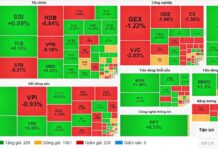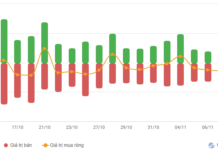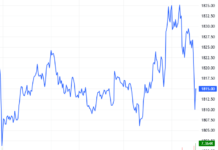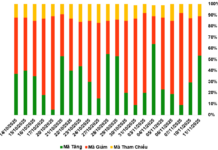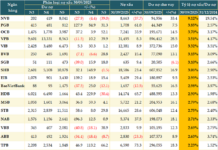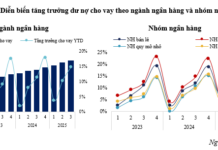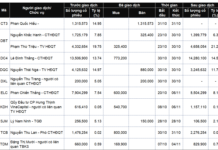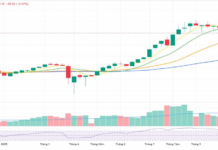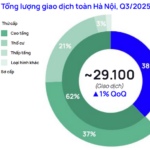This agreement marks a significant leap forward in applying Big Data and Artificial Intelligence (AI) across the entire real estate service chain: valuation, mortgage lending, asset liquidation processing, and property transactions. It promises a transparent, seamless, and reliable experience for customers.
Under the new partnership, VPBank and Citics will introduce additional key services to enhance the digital financial-real estate ecosystem. A standout feature is Citics Homes, a platform where VPBank’s debt-recovery properties are publicly listed with detailed information and flexible financing options, making it easier for customers to access and transact. Simultaneously, the Citics Flow platform will be implemented, enabling the bank’s internal systems to directly connect with Citics’ real estate database. This integration automates valuation processes, minimizes risks, and enhances user experience.
This expanded collaboration builds on the successes achieved since the partnership began in October 2024. VPBank and Citics have launched two notable solutions: Citics Value, a rapid and accurate real estate valuation service, and Citics Mortgages, a seamless digital mortgage service covering everything from credit assessment to disbursement. These solutions have significantly reduced processing times and operational costs for VPBank while enhancing risk management through real-time data updates. For customers, accessing home loans has become simpler, more transparent, and convenient than ever.
The partnership’s success is evident in the numbers: in August 2025 alone, the total mortgage disbursement through Citics Mortgages exceeded 600 billion VND. This achievement not only demonstrates the model’s effectiveness but also reflects the market’s demand for a transparent and modern lending process. Building on this momentum, VPBank and Citics aim to reach a monthly disbursement target of 1,000 billion VND by the end of 2025.
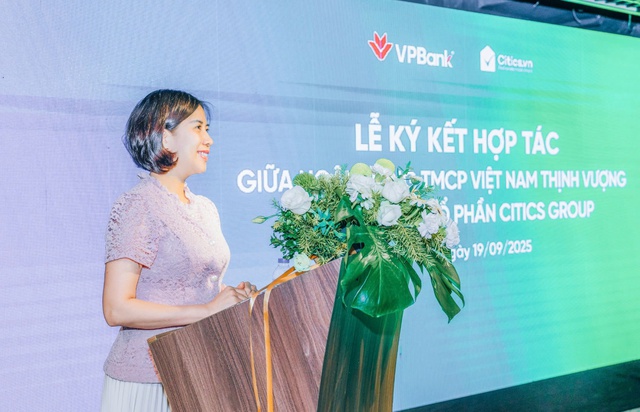
Ms. Phan Mỹ Hạnh, Director of Mortgage Products and Partnership Center (Retail Banking Division) at VPBank, speaks at the event.
Amid the liquidity and trust challenges facing Vietnam’s real estate market, the VPBank-Citics partnership holds significant importance. By standardizing and digitizing processes, both parties not only enhance service quality for customers but also set new benchmarks for the financial-real estate market. Data transparency and technology application are key to unlocking capital, reducing risks, and fostering sustainable recovery.
Speaking at the event, Mr. Trần Minh Long, CEO of Citics Group, emphasized, “The combination of Citics’ comprehensive real estate technology platform and VPBank’s financial capabilities not only delivers impressive disbursement figures but also introduces a more effective approach, creating a seamless solution chain for the financial and real estate markets.”

Mr. Trần Minh Long, CEO of Citics Group, speaks at the event.
Representing VPBank, Ms. Phan Mỹ Hạnh, Director of Mortgage Products and Partnership Center (Retail Banking Division), stated, “As a leading retail bank in Vietnam, especially in real estate lending, VPBank is at the forefront of digital transformation and process modernization to deliver unique value to customers. The collaboration between VPBank and Citics is a new step that combines financial services with modern real estate technology, driving the modernization of home loan processes and supporting customers in securing their dream homes with ease and convenience.”
Citics has digitized and identified over 33 million properties, providing preliminary valuations for more than 18 million properties nationwide. This not only constitutes Vietnam’s largest real estate database but also serves as a critical foundation for banks, valuation firms, and financial institutions to enhance asset appraisal, risk management, and modern service development. When integrated into VPBank’s system, this data optimizes the home loan process, shortens approval times, and provides peace of mind for customers.
About Citics
Citics is Vietnam’s leading and comprehensive real estate technology platform, built on Big Data, AI, and modern digital solutions. By integrating valuation, mortgage, buying, selling, and real estate investment services into a single platform, Citics offers a seamless solution for the entire real estate journey.
To date, Citics has expanded its operations to over 30 provinces, digitized more than 33 million properties nationwide, and partnered with over 80% of Vietnam’s top banks. With this solid foundation, Citics is a pioneer in fostering transparency and innovation within Vietnam’s real estate and financial ecosystem.
About VPBank
Vietnam Prosperity Joint Stock Commercial Bank (VPBank) is one of Vietnam’s leading joint-stock commercial banks. After 32 years of development, VPBank ranks among the private banks with the highest charter capital, serving over 20 million individual and corporate customers nationwide.
For several consecutive years, VPBank has been honored in the Top 100 Most Valuable Global Bank Brands (Brand Finance) and has established itself as a leader in digital transformation in Vietnam. Its comprehensive financial ecosystem covers credit, payments, insurance, investment, and digital banking.
Mapletree’s Next Move: Unveiling the 13,600m² West Tay Ho Land (Part 1)
In late 2024, Mapletree Investments Pte Ltd (Mapletree) finalized the acquisition of a 13,600m² land plot in the Tay Ho Tay urban area from Taseco Land, paving the way for the development of a Grade A office tower combined with retail space, boasting a total floor area of nearly 92,000m². This marks a rare move by the Singaporean real estate giant in Hanoi, following over a decade of primary focus on Ho Chi Minh City.
Surge in Year-End Investment Floods Bordering Areas of Ho Chi Minh City
Investment trends are increasingly shifting towards the regions bordering Ho Chi Minh City, with real estate in areas like Can Giuoc, Ben Luc, and Duc Hoa in Tay Ninh Province becoming highly sought-after by savvy investors. These locations, strategically positioned near the bustling metropolis, are quietly emerging as prime targets for those looking to capitalize on their proximity and growth potential.
Revitalizing Land Records: Ho Chi Minh City Launches Massive Data Cleansing Initiative for Over 5 Million Plots
Ho Chi Minh City is set to refine its land database, ensuring seamless alignment with the two-tier local government model while fostering connectivity and data sharing within the national population database.

